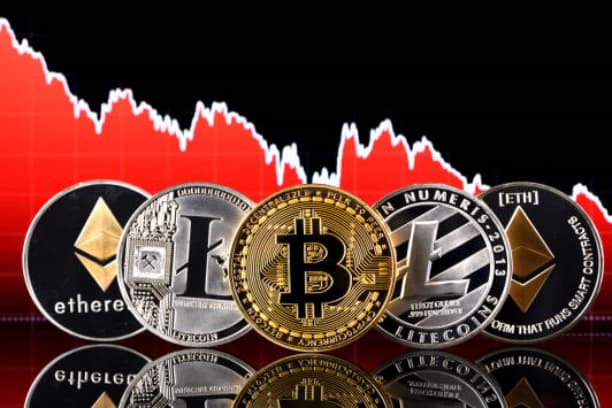Hello, I'm Mike! Today we're going to talk about The Wavefield Coin (TRX), one of the most talked about cryptocurrencies in the cryptocurrency space. It's not only an interesting blockchain project, but it's also getting a lot of attention for its high-speed transaction performance and low transaction costs. But is TRX really worth investing in? And what are the risks to be aware of? In this article, we will provide a comprehensive analysis of the technical features, application scenarios, investment value and risks of Wavefield Coin to help you more clearly determine whether it is suitable for you to participate in this crypto asset.

What is The Exchange (TRX)?
The Wavefield Coin (TRX) is the native token of the Wavefield blockchain, launched by Sun Yuchen in 2017. Wavefield focuses on a decentralized content sharing ecosystem, aiming to enable users to create, share and trade content directly on the blockchain, and eliminating the intermediary draws of traditional platforms.TRX serves as the base token for the Wavefield network, and is primarily used to pay transaction fees, participate in network governance and support smart contract execution.
Wavefield's technology features stand out, such as supporting up to 2,000 TPS (Transactions Per Second) performance and ultra-low transaction costs, making it ideal for many Decentralized Applications (DApps) and DeFi projects. As of 2024, Wavefield's ecosystem has more than 1,000 DApps running, while working with a number of well-known exchanges and payment platforms.
Investment Value of Polynomials
High-speed performance and low-cost advantages
The ability of wavefield blockchain to provide fast and cheap transactions is one of its major highlights. In practice, compared with Ether, Wavefield transactions are faster and can significantly reduce users' transaction costs in DeFi operations, which makes it attractive to a large number of users and developers.
Large Ecosystems
Uses of TRX include decentralized applications (DApps), decentralized finance (DeFi), cross-border payments, and token issuance (e.g., USDT's liquidity in the waves). Such a diverse application landscape further enhances the value stability and long-term demand for TRX.
Market Recognition
TRX is currently traded on many of the world's major exchanges and has been recognized by many analysts as a "potential currency of the future" due to the innovative nature of the market. Its market capitalization is among the top 20, demonstrating relatively solid growth.
Risk Warning on Polarized Currency
Policy Risks
Wavefield and its founder, Sun Yuchen, have been embroiled in a number of regulatory controversies over the past few years, making investors wary of the legal challenges the program may face. Regulatory policies for cryptocurrencies in markets such as China could still have a potential impact on the future of TRX.
Centralized Disputes
Despite its claim to be a decentralized network, the consensus mechanism (DPoS) of the wavefield is overly reliant on a small number of super-representative nodes, which may raise questions about the fairness of blockchain governance. The overly centralized mode of operation may weaken the decentralized nature of its blockchain.
Price Fluctuation and Investment Risk
The market price of TRX is heavily influenced by market sentiment and general market volatility, and may experience drastic price changes in the short term. If you are a short-term investor, you need to be prepared to bear the risk; if you are a long-term holder, you need to keep an eye on its technical development and application growth.
How do I evaluate the investment potential of TRX?
Market Positioning and Competitive Analysis
TRX focuses on low-cost, high-performance decentralized application platforms. In this area, its competitors include blockchains such as Ether, BSC (Coin Smart Chain) and Solana, which also have their own technical and resource advantages. Investors need to judge whether TRX can stand out from these competitors based on their own risk tolerance.
Technology Advancement and Ecological Expansion
The field's technology upgrade program (e.g. Layer 2 solution) and the addition of new partners will be important for its future growth. TRX's value is expected to continue to increase if the field can continue to expand its DApp ecosystem and bring in more capital inflows.
Short-term vs Long-term Investment Strategies
For those who are optimistic about the long-term technical development of the wave market, they may consider building up their positions in batches and holding them for the long term; short-term investors need to capitalize on trading opportunities in a volatile market while being wary of the potential losses brought about by chasing highs.
Future Outlook for Polynomials
TRX still has a lot of room to grow in the future, especially as it is adopted in more decentralized financial and payment scenarios. However, its success depends on the technical stability, application scale and market acceptance of the wavefield ecosystem. Changes in the regulatory environment and technological breakthroughs by competing projects will also be major challenges for the future development of wave farms.
Frequently Asked Questions Q&A
Q1: Is TRX suitable for new investors?
A: TRX is a good choice for novice investors because of its relatively low price and wide range of applications. However, you need to pay attention to position control and learn the related trading knowledge first.
Q2: Where can I buy BofA coins?
A: You can buy TRX on several major exchanges, such as OKX, Binance or Coinbase, and you can save some money by choosing an exchange that supports rebates.
Q3: What is the future pricing potential of TRX?
A: The price of the wave coins is subject to market demand and technological advancement, and may be volatile in the short term. However, in the long run, the expansion of its application ecosystem may bring stable growth.
I hope this article has helped you to gain a fuller understanding of the BoC and has inspired you in your investment decisions!














